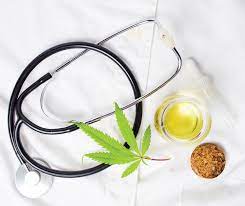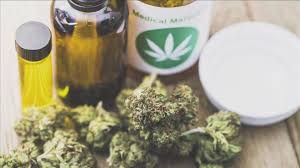From Seed to Solution: The Journey of Medical Cannabis Products

From Seed to Solution: The Journey of Medical Cannabis Products
The journey of medical cannabis products from seed to solution involves multiple stages, each critical to ensuring the quality, safety, and effectiveness of the final product. Here’s an overview of the typical steps involved:
- Cultivation: The process begins with the cultivation of cannabis plants. Seeds or clones are planted, and the plants are carefully nurtured in controlled environments, such as indoor grow facilities or outdoor gardens. Factors like light, temperature, humidity, and nutrients are closely monitored to ensure optimal growth.
- Harvesting: Once the cannabis plants reach maturity, they are harvested. This involves carefully cutting the plants and separating the flowers (buds) from the rest of the plant material. The timing of the harvest can impact the potency and quality of the final product.
- Drying and Curing: The harvested buds are dried to reduce moisture content. Proper drying helps preserve the cannabinoids and terpenes present in the flowers. After drying, the buds undergo a curing process, during which they are stored in controlled conditions to develop the desired aroma, flavor, and potency.
- Extraction: For medical cannabis products found in Medical Cannabis Clinic, extraction is a crucial step. It involves separating the desired compounds, such as cannabinoids and terpenes, from the plant material. Different extraction methods, such as solvent-based extraction (using ethanol or CO2) or solventless extraction (like rosin press), are used to create concentrated forms of cannabis oil.

- Testing: Quality control is vital in the medical cannabis industry. Extracted products are rigorously tested for potency, purity, contaminants (such as pesticides, heavy metals, and microbes), and terpene profiles. Testing ensures that the final product meets safety and efficacy standards.
- Formulation: Based on the desired cannabinoid ratios and concentrations, extracted oils are formulated into various product types, such as tinctures, capsules, edibles, topicals, and vaporizable concentrates. The choice of formulation depends on the medical condition being targeted and patient preferences.
- Packaging and Labeling: Medical cannabis products must adhere to strict packaging and labeling regulations, including clear information about the product’s potency, ingredients, usage instructions, and any potential risks. Child-resistant packaging is often required to prevent accidental ingestion.
- Distribution: Once products are packaged and labeled, they are distributed to licensed dispensaries or medical facilities authorized to dispense medical cannabis. Distribution networks vary based on regional regulations.
- Patient Access: Qualified patients with a medical recommendation from a healthcare provider can access medical cannabis products from licensed dispensaries. Regulations regarding patient eligibility and access vary by jurisdiction.
- Patient Consultation: Dispensary staff often provide consultations to patients, helping them select appropriate products based on their medical conditions, preferences, and desired effects. They also offer guidance on dosing and consumption methods.
- Ongoing Monitoring: Patients using medical cannabis products are encouraged to communicate with their healthcare providers about their experiences, effects, and any concerns. Adjustments to dosages and products may be made based on patient feedback and evolving medical needs.
Throughout this journey, adherence to legal and regulatory requirements is essential to ensure patient safety and maintain the integrity of the medical cannabis industry. The goal is to provide patients with consistent, high-quality products that can effectively address their medical conditions and improve their quality of life.
Leave a Reply